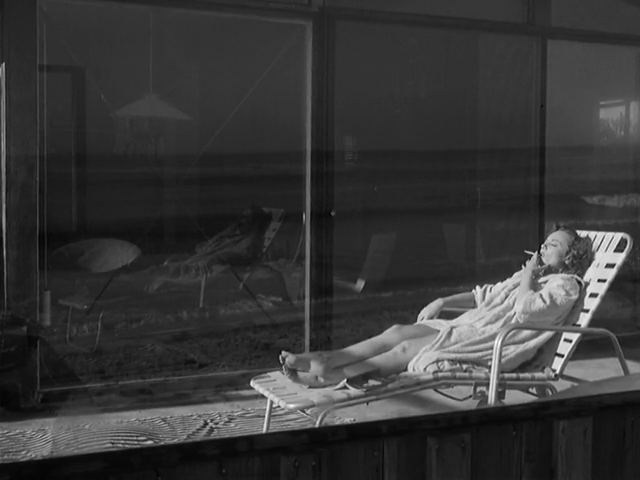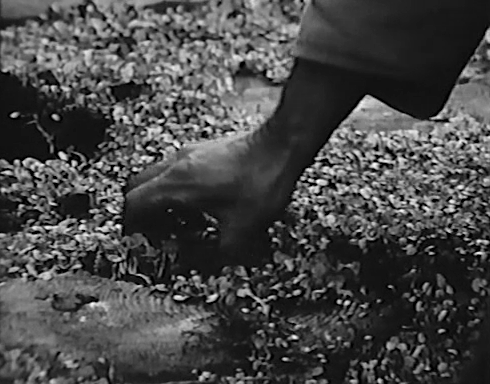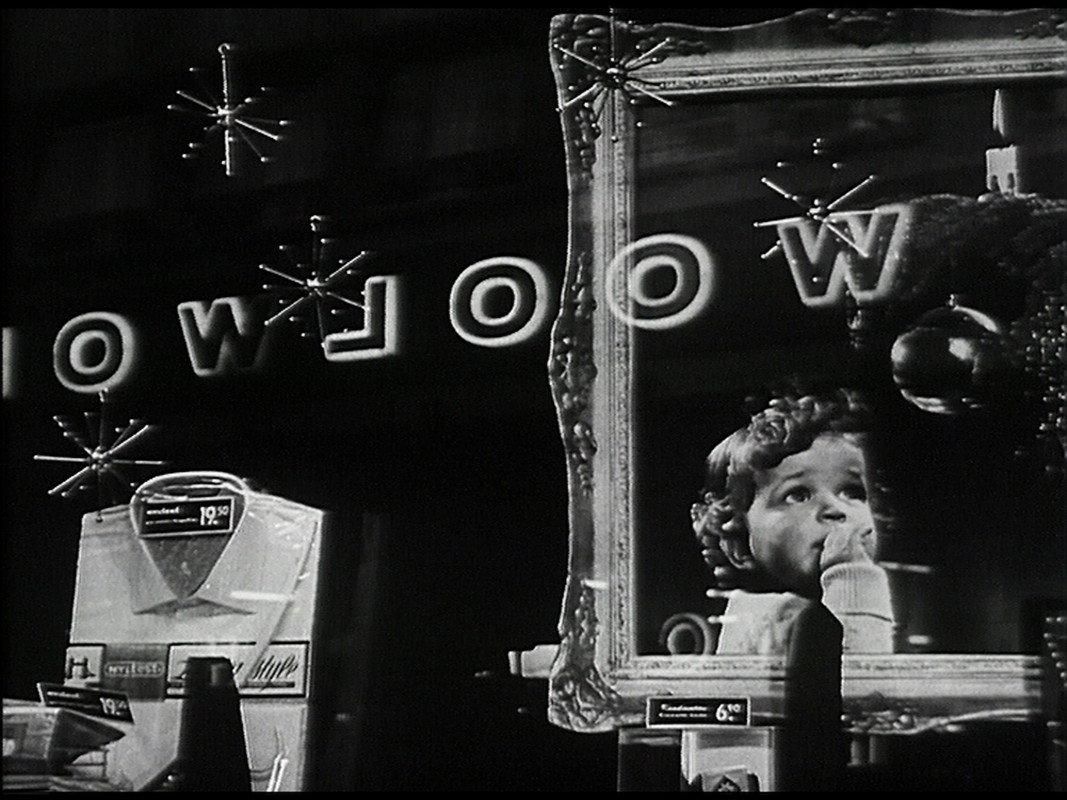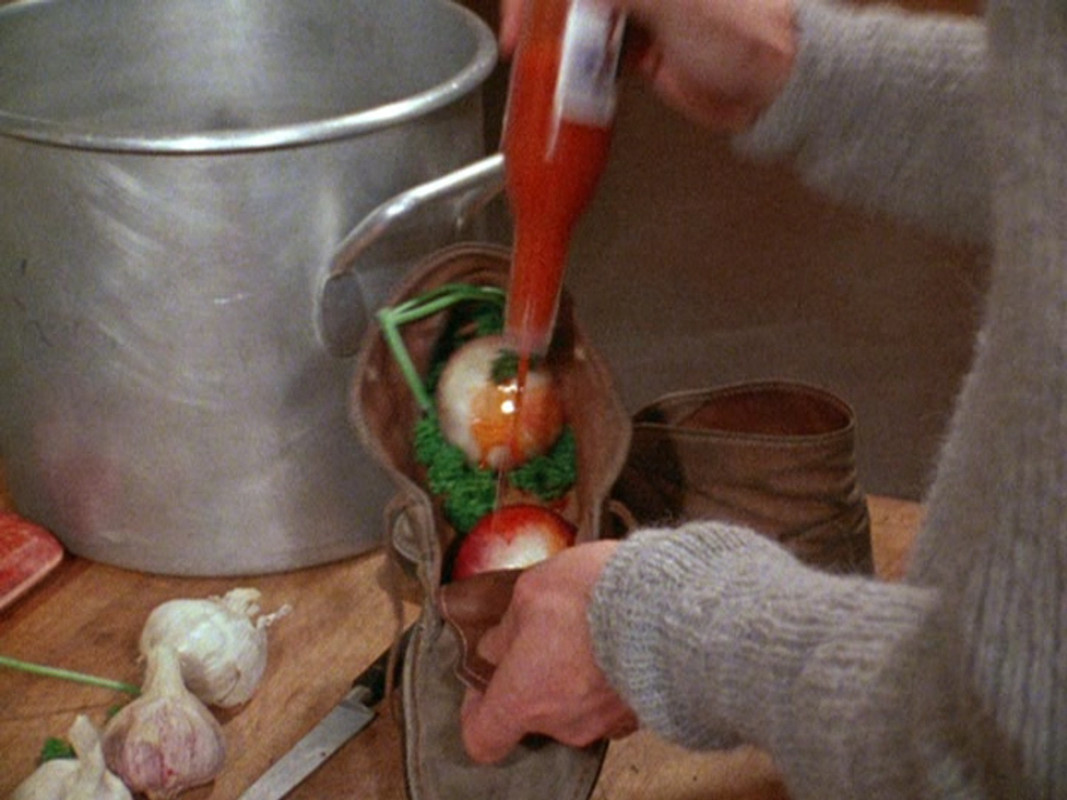“Come Senators, Congressmen,
Please heed the call,
Don't stand in the doorway,
Don't block up the hall”Crisis: Behind a Presidential Commitment (Robert Drew, 1963)
Dec
14
Alabama Day

Bobby on the phone, seen from the back. DP: Gregory Shuker.
Alabama Day: filmed in Alabama.
In what he dubbed “Stand in the Schoolhouse Door”, George Wallace, Alabama governor, blocked Black students from walking into the University so he could uphold his inaugural promise of “segregation now, segregation tomorrow, segregation forever”. This prompted a national crisis, resulting in the President issuing Executive Order 11111, making the #NationalGuard step in.
– Bob Dylan, The Times They Are a-Changin (1964)
In a then-groundbreaking new documentary format, Robert Drew and associates followed President John F. Kennedy and Attorney General Robert F. Kennedy during the crisis. And they filmed everything; from tense phone calls, private discussions, private moments (one of RFK's daughters on the phone with a bemused “Kerry”, Dept. Nicholas Katzenbach), and many, many shots in which nothing – which is everything – is said.
documentary
“Can you smell the garlic?”Garlic Is as Good as Ten Mothers (Les Blank, 1980)
Dec
12
National 12 Hour Fresh Breath Day

Three representatives of the garlic festival. Their tees read: THE GARLIC TO SHARE WITH A FRIEND, MINE DOESN'T STINK, and WE LEAVE YOU BREATHLESS. DP: Les Blank.
Someone has bad breath on National 12-hour Fresh Breath Day (USA)
“When he shows the 1978 film Always for Pleasure, about the food, music and indigenous culture of New Orleans, [Les Blank] has been known to whip up a pot of red beans and rice in the back of the theatre. [cont. below]
– Alice Waters. During screenings, the audience would reply with “YES!”
“At presentations […] Blank can occasionally be spied tossing several heads of garlic into a toaster oven so that the aroma wafts over the audience at just the right mouth-watering moment.” (via)
“I dream of resurrection in a party dress.”The Savage Eye (Ben Maddow, Sidney Meyers + Joseph Strick, 1959)
Dec
7
National Judith Day

Judith X (Barbara Baxley) relaxing on a sun lounger. DPs: Jack Couffer, Helen Levitt & Haskell Wexler.
A Judith or Judy for National Judith Day (USA)
By times, The Savage Eye has more in common with mondo than with drama. Judith's betrayed, by her husband. She takes a plane out out out. To Los Angeles, where an angel – it's their town after all – talks to her. About her life, the old one and the new. She tries to reinvent herself with new clothes, a hairstyle, a manicure. It fills the longs days, that too. She attends bloodsports. A burlesque, with her new lover, a married man. There are bleeders and drinkers and jumpers. Sticky sheets. New eyes and fiery tongues, courtesy of Jesus. What is Judith's life if not a stranger's.
– Judith X
Ben Maddow, Sidney Meyers, and Joseph Strick's lonely exploration of a gritty, hopeless LA was filmed over 4 years by photographers Haskell Wexler, Helen Levitt, and Jack Couffer in wonderful, merely wordless cinéma vérité. It feels naked and raw, and broke ground for the American New Wave that came crashing in almost a decade later.
Mr. Hayashi (Bruce Baillie, 1963)
Dec
5
World Soil Day

Mr. Hayashi's hand digging in soil.
Someone digs in soil on World Soil Day
1999 A.D. (Lee Madden, 1967)
Nov
27
Cyber Monday

Mother Karen (Marj Dusay) taking a break from online food planning by shopping for a new wardrobe for everyone but herself. DP: Vilmos Zsigmond.
Shopping online on Cyber Monday
In the soul crushing future of 1999, one heroic nuclear family bravely fulfils their gender-specific duties. While Father Mike works in his computer-aided office, Son Jamie fails at computer homeschool and Mother Karen slavishly shops, cooks, and cleans as if the 70s never happened.
Thankfully, the future turned out to be even bleaker.
Weihnacht (Roland Klick, 1963)
Nov
24
Black Friday

The miracle of Christmas, as seen in a fancy shop window. A dress shirt is on display among Sputnik-style decorations and an entranced toddler is reflected in a gilded mirror. From across the street, “Woolworth's” in neon text bounces off the window pane. DPs: Jochen Cerhak & Roland Klick.
Holiday shopping on Black Friday (once just the USA, now this pest is everywhere)
A little boy takes in the magic of pre-Christmas, while the adults rush and worry about all that must to be bought.
Italianamerican (1974)
Cast and crew in the Scorsese family dining room.

November 23: family dinner for #Thanksgiving
Italianamerican (Martin Scorsese, 1974)
Take a few spoonfuls of tomato and throw them in there.
While mother Scorsese's famous meatballs in gravy are working their way to mwah! chef's kiss perfection, son Martin interviews his parents Catherine and Charles. For those unsure what to cook, and for those who don't celebrate Thanksgiving at all, mama's recipe is included in the end credits. And here:
Muloorina (David Cobham, 1964)
Nov
17
Guinness World Records Day

The Bluebird parked amongst the crew's Jeeps. DPs: John Daniell, Ross King, Frank McKechnie, Ian Millar & Bob Wright.
Short in gorgeous Technicolor, Muloorina tells about a small, arid town in Australia that one day finds itself on the world's stage. Kati Thanda–Lake Eyre, a local salt lake that hasn't seen a drop of rain in nine years, is the perfect spot for a landspeed record attempt by British daredevil Donald Campbell and his Bluebird.
A play of contrasts. The supersonic blue machine on the ancient white riverbed and the slowness of the eternal landscape versus something faster than should be possible. And meanwhile, the locals care for their land and animals, and wait for rain.
Kick That Habit (Peter Liechti, 1989)
Nov
16
National Andy Day

Andy Guhl of experimental Swiss music/art group Voice Crack playing metal wire strung along a room. DP: Peter Liechti.
Everything is noise. Everything is light. Everything is dark. Everything is motion. Everything is static. Everything is energy. Everything is lethargy. Everything is rhythm. Everything is chaos. Everything is silent
Werner Herzog Eats His Shoe (Les Blank, 1980)
Nov
8
Cook Something Bold Day

Herzog prepares his left suede Clarks in Alice Waters' restaurant kitchen. DP: Les Blank.